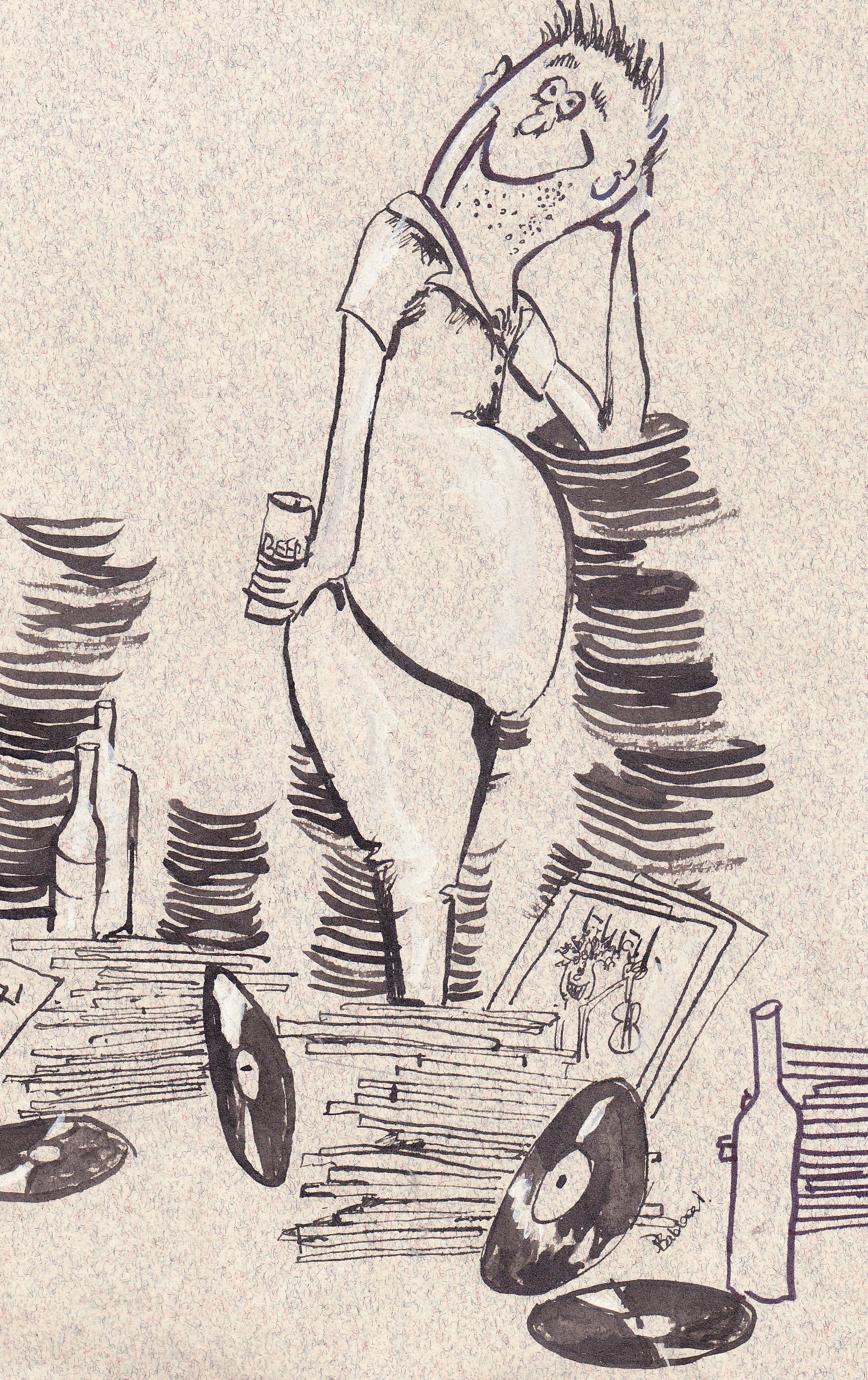- Vinyl-Records
- Rock and Roll History
Rock and Roll History
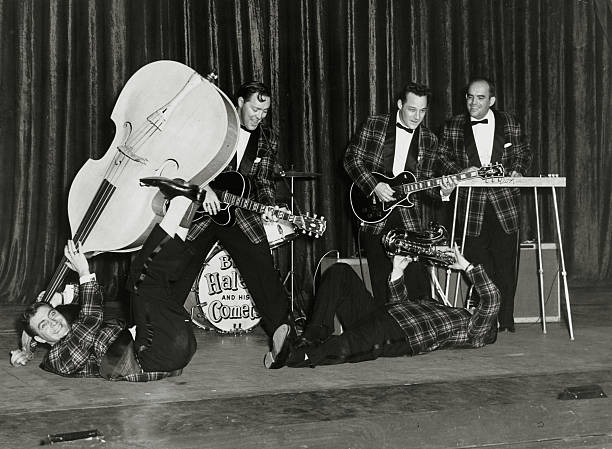  |
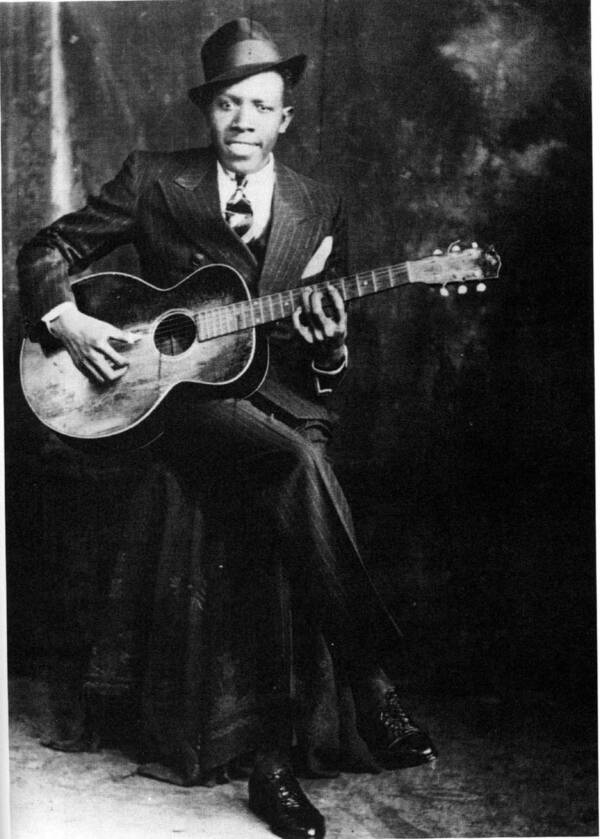 |
The Rock and Roll History! Who Made the first Rock and Roll record?
Rock and Roll is undoubtedly one of the most influential genres of music, impacting countless listeners worldwide. To understand "The History of Rock and Roll Music, from the invention of the Phonograph for playing back records, to Muddy Waters' first records of Chicago electric blues, Bill Haley's 'Rock Around The Clock' to Elvis, Chuck Berry, the Wall of Sound, Surf Music and The Beatles," we must go back in time to the late 19th century, specifically to 1877 when Thomas Edison invented the phonograph. This invention laid the groundwork for music to be mass-produced and consumed, allowing various styles and genres to evolve and reach broad audiences. The first recording Edison made was “Mary Had a Little Lamb”.
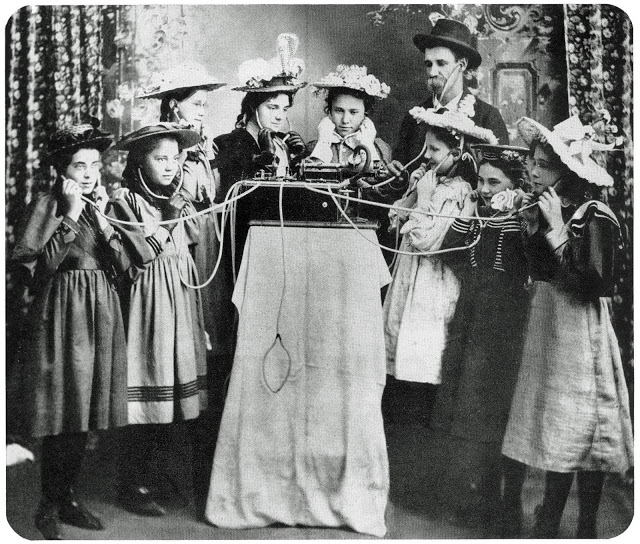
In the early 20th century, the jazz and blues genres began to shape and influence what would eventually become rock and roll. The Chicago Automatic Machine and Tool Company invented the Juke Box. What an influence that was!!

It wasn't until the first formal jazz recording in 1917 by Nick La Rocca’s Original Dixieland Jass Band’s release “The Dixieland Jazz Band One-Step” that the official documentation of this cultural shift began. These early jazz and blues records were crucial in setting the stage for rock and roll, highlighting the rhythm, improvisation, and emotive style that would become its cornerstone.
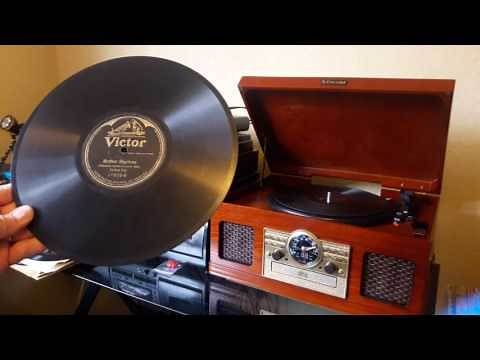
The introduction of the 78-rpm record was a game-changer for music distribution, allowing for longer recordings that opened up new possibilities for musicians. ........

....and this era brought us figures like Mamie Smith, whose 1920 recording of "Crazy Blues" was a landmark moment, making her the first African American artist to record a blues song. Her success illustrated the growing interest in African American music and foreshadowed the cultural synergy that would underpin rock and roll.

In 1936, Billboard introduced its first record sales chart, and legendry bluesman Robert Johnson (who greatly influenced Eric Clapton) recorded his first record, on November 23 1936. In San Antonio Texas, Muddy Waters put down "Terraplane Blues" one of the first successful blues recordings.
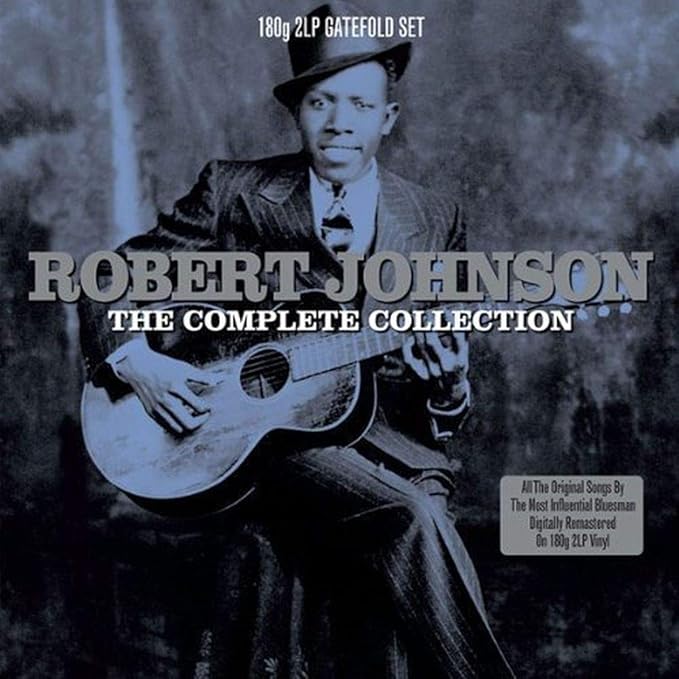
Robert Johnson Collection
This album has all Robert Johnson collection music. It includes "Terrraplane Blues", Ramblin' On My Mind" (later covered by Clapton) , 32/20 Blues with41 tracks in all.
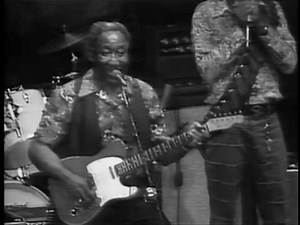
Muddy Waters scored major success with his classic songs, “Mannish Boy,” “Baby, Please Don’t Go,” and “I’m Your Hoochie Coochie Man.” During his career, Waters collaborated with seemingly everyone under the sun, including Earl Hooker, Jimmy Rogers, Buddy Guy, Levon Helm, and so many other infamous musicians.

The Best Of Muddy Waters Album
Contains 12 of his best songs, including "Rolling Stone", the on that gave The Rolling Stones their name. Also among the 19 tracks is Hoochie Coochie, and Honey Bee.
First act to top the Billboard chart?????
Joe Venuti, a jazz violin player, along with his orchestral band on January 4th, 1936, with “Stop Look and Listen "In 1938, Saxophonist Louis Jordan leaves Chick Webb’s sax section to form his Tympany Five. This could be regarded as the beginning of Rock and
In 1938, Saxophonist Louis Jordan leaves Chick Webb’s sax section to form his Tympany Five. This could be regarded as the beginning of Rock and Roll.
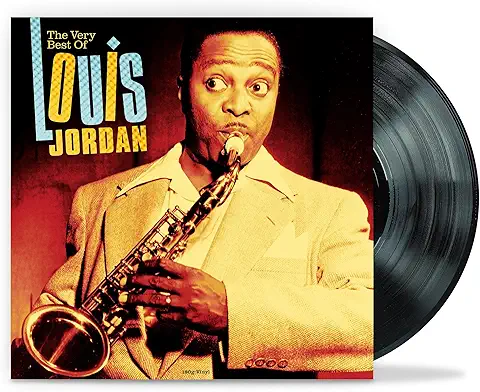
The best of this great artist. 18 tracks including the original "Choo Choo Ch'Boogie"
By now, Boogie had been flourishing in Kansas City, where Joe Turner and Pete Johnson cut their first record. This Boogie Woogie spread to Chicago.
Then the first US record shop, maybe the first record shop anywhere, was founded in Cleveland Ohio, by Leo Mintz, the Record Rendezvous, in 1939.Mintz also encouraged radio announcers at the time to play more “Race Music” which eventually was re-named “RnB”
Fast forward to the development of electric blues in the 1940s in Chicago—a vital precursor to rock and roll. Often overlooked is Muddy Waters, who began recording in Chicago in the late 1940s. His use of electric guitar and amplification added a new dynamic to blues, making it louder and more energetic. His recordings marked a turning point, inspiring a generation of artists who would soon push the boundaries even further to create rock and roll.
In 1946 Louis Jordan develops “Jump Blues”, maybe the first RnB sound with “Choo Choo Ch ‘Boogie”
Then Billboard writer Jerry Wexler came up with the term “Rhythm and Blues” for electric blues.
The electric guitar was invented by Adolph Rickenbacker in 1931 and was beginning to make its presence felt.
Chess records was founded in 1947, as was Atlantic Records.
And Roy Brown writes and records “Good Rockin’ Tonight” in Texas
Columbia introduced the 12 inch 33-1/3rd RPM Long Playing Record in1948. (I was 1!) And in 1949, RCA Victor introduces the 45 RPM record.
Billboard introduced “Rhythm and Blues “onto its chart.
Meanwhile, mainstream culture began taking note of the potential for music to captivate teenagers. By the 1950s, the social climate was ripe for the emergence of rock and roll.
The first Rock and Roll record, “Rocket 88” was recorded credited to Ike Turner and his Kings of Rhythm but performed by Jackie Brenston and the and the Delta Cats.
This historic first Rock and Roll record was recorded March 3, 1951, (yes, 74 years ago) was recorded at Sam Phillips studio in Memphis. Its about the popular Oldsmobile model, the “Rocket 88”
In 1952 Bill Haleys Saddlemen became the Comets. They recorded “Crazy Man Crazy”, in 1953 which became the first rock and Roll record to enter the Billboard charts.
Then “Rock around The Clock” became the first Rock and Roll record to be used as a film soundtrack
This track is often cited as "The First Rock and Roll record" to achieve mainstream success, capturing the teenage spirit of rebellion and freedom. It was the first Rock and Roll record to hit No. 1on the Billboard chart. And, like many, many others, got me into Rock and Roll and drumming.

Sam Phillips founds Sun Records in 1952 and declares “If I could find a white man who sings with the negro feel, I’ll make a million bucks!”
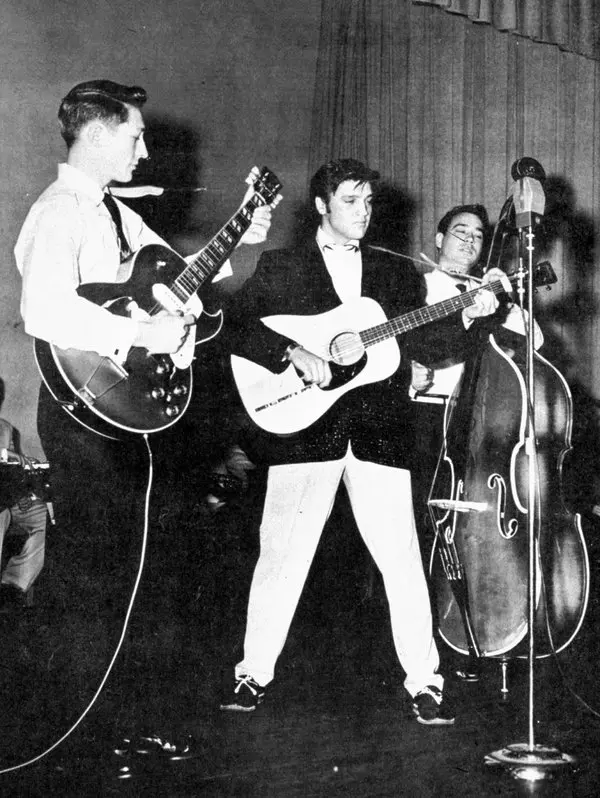
Sales of the new 45 rpm records, introduced in 1949 were outselling 78’s in 1955
Then in1956 Elvis' did "Heartbreak Hotel" and it became one of "The first successful Rock and Roll records.” cementing his place in music history as a ground-breaking performer who brought rock and roll into mainstream consciousness.
Elvis Presley, Johnny Cash, Roy Orbison and Jerry Lee Lewis were all signed by Sam Phillips to Sun Records, (The Million Dollar Quartet) His ability to identify and nurture raw talent created a breeding ground for early rock and roll artists and sounds.
In 1954, Elvis, Scotty Moore (guitar) Bill Black (bass) and D.J. Fontana (drums) recorded “That’s All Right” on Sam Phillips Sun label. The same year “Good Rockin’ Tonight” came out.
Sales of the new 45 rpm records, introduced in 1949 were outselling 78’s.
Also, in 1956 The Everley Brothers introduce close harmony. And “American Bandstand” first aired on Nationwide TV
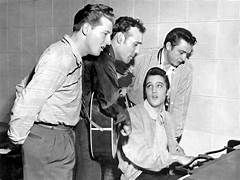 Sam Phillips not only found Elvis, but soon had on his books "The Million Doller Quartet!"
Sam Phillips not only found Elvis, but soon had on his books "The Million Doller Quartet!"Elvis Presley, Johnny Cash, Roy Orbison and Jerry Lee Lewis were all signed by Sam Phillips to Sun Records. His ability to identify and nurture raw talent created a breeding ground for early rock and roll artists and sounds.
In 1959 Buddy Holly dies age 22 in a plane crash with The Big Bopper.
Berry Gordy founds Tamla-Motown records.
Around the same time, Chuck Berry emerged as a pioneering figure in rock and roll. Known for his clever lyrics, guitar riffs, and energetic performances, Berry brought a blend of rhythm and blues and rock, blending them with a storytelling style that resonated with audiences. His hit "Johnny B. Goode" is one of the greatest rock and roll songs ever recorded, epitomizing the genre's strengths. He was one of the first to write the songs, record them and tour them with the same band who recorded them.
Not to be outdone, the 1960s introduced Phil Spector's "Wall of Sound." This production technique involved layering multiple instruments to create a rich and full sound, capturing listeners' imaginations. Spector's work with girl groups like The Ronettes and The Crystals exemplified how rock and roll continued to evolve and hybridize musical ideas.
Stevie Wonder, James Brown, and The Supremes emerged in the 60’s
Surf music also left its mark on the fabric of rock and roll. Pioneered by artists like Dick Dale and popularized by The Beach Boys, surf music introduced upbeat rhythms and catchy melodies that captured the spirit of California's beach culture. Songs like "Surfin' USA" encapsulated the fun-loving aspect of rock and roll, appealing to a wide audience.
The British Invasion of the early 1960s redefined rock and roll as we know it, bringing the genre back across the Atlantic with renewed Vigor. The Beatles, hailing from Liverpool, played a monumental role in this movement. Their innovative songwriting, combined with charismatic performances, turned them into international superstars who influenced countless musicians.
The Beatles primarily began recording in 1962 and quickly became a sensation, producing a string of hit records. Their experimentation with diverse music styles helped to broaden rock's horizons, incorporating elements from classical music, Indian music, and more. Such diversity ensured that rock and roll continued to innovate and captivate new audiences.
In observing the rise of rock and roll, it's crucial to mention the commencement of the Billboard charts. Established in 1936, these charts became an invaluable tool for measuring a song's popularity, helping artists recognize their achievements and listeners grasp the genre's constantly shifting trends.
Many often overlook the artists who first recorded rock and roll music. While Elvis and Chuck Berry are household names, figures like Sister Rosetta Tharpe, often called the "Godmother of Rock and Roll," played a starring role too. Her energetic guitar playing and gospel-influenced vocal styles predated and influenced many rock and roll titans.
As rock and roll matured, it started influencing fans globally, providing a unifying platform transcending cultural and national boundaries. Its unyielding energy and rebellious vibes appealed primarily to younger audiences, challenging traditional social norms and laying the groundwork for future social and cultural revolutions.
Knowing the history of rock and roll also enlightens audiences about the myriad artists who contributed to the genre, acknowledging figures such as Fats Domino, Little Richard, and Bo Diddley. Their contributions to rock and roll came through distinctive styles and sounds, continually evolving what rock and roll could be.
Moving deeper into the late 1960s, rock and roll witnessed further diversification with the emergence of psychedelic rock, hard rock, and folk rock among others. Bands like The Rolling Stones, The Who, Spencer Davis Group and The Kinks, then from the US The Byrds, and The Doors explored new ways of using rock and roll as a tool for artistic expression, each with their unique approach and message.
The influence rock and roll had on culture cannot be understated. It was instrumental in shaping the ethos of the '60s and beyond. Rock songs became anthems of social movements, pushing boundaries and encouraging listeners to think critically about issues ranging from war to civil rights.
George Harrison of The Beatles, delved into his solo projects with "Wonderwall Music" in 1968, inspired by Indian classical music. Although not rock and roll per se, it exemplified the genre's capacity to absorb and reinterpret various musical influences, leaving a lasting mark on music history.
The 1970s saw the continued success and evolution of rock and roll, with bands experimenting further with sounds and styles. Glam rock, punk rock, and heavy metal arose, showing how malleable rock and roll was. Bands like Led Zeppelin, Queen, and The Ramones left their imprint during this era, each in their distinct way.
Despite the shifts in musical tastes over the decades, the foundation built by early rock and roll artists provides an educational and inspirational framework for modern musicians. Today’s music encapsulates rock and roll’s rebellious spirit and continues to draw inspiration from its rich history.
In understanding the milestones in "The History of Rock and Roll Music, from 1877 invention of the Phonograph for playing back records, to Muddy Waters first records of Chicago electric blues, Bill Haley's 'Rock Around The Clock' to Elvis, Chuck Berry, the Wall of Sound, Surf Music and The Beatles," we grasp the foundations of a genre that redefined modern music and left an indelible mark on global culture.
Thus, this exploration doesn't only serve as a historical
account but reveals how rock and roll acts as a connective tissue through
subsequent musical evolution and cultural shifts, shaping creativity and
self-expression over generations.
The genre's ability to constantly reinvent itself has
ensured that it remains relevant in contemporary music scenes, witnessing a
resurgence in various subcultures and live performances.
Remarkably, the sentiments conveyed through rock and roll
haven't lost their potency—feelings of defiance and empowerment still resonate
well in a society that continues to grapple with issues of identity and
authenticity.
Rock and roll's perseverance is evident, demonstrating the
evergreen appeal of its foundational elements while consistently inspiring new
artists.
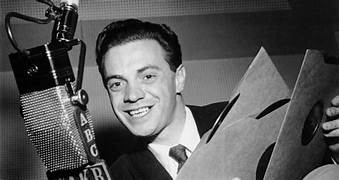
Remembering this vibrant history allows us to appreciate the complexities and rich lineage of one of music’s most influential genres, celebrating its countless contributions, from the creation of the first rock and roll records to shaping society's cultural fabric.
And, in 1965 Alan Freed, the man who gave Rock ‘n’ Roll its name died, to early, at the age of 43.
Enjoy this site? Share with friends!
Mamy Smith "Crazy Blues"
Louis Jordan Tympany Five
Bessie Smith, "My Baby Rocks Me.."
Pete Johnson and Joe Turner
Joe Venuti
Bill Haley, Rock Around the Clock
Muddy Waters "Manish Man"
Sister Rosetta Tharp
Rocket '88: The First Rock'n'Roll Recording
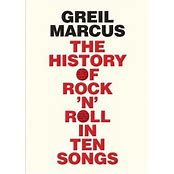
Unlike all previous versions of rock ’n’ roll history, this book omits almost every iconic performer and ignores the storied events and turning points that everyone knows. Instead, in a daring stroke, Greil Marcus selects ten songs recorded between 1956 and 2008, then proceeds to dramatize how each embodies rock ’n’ roll as a thing in itself, in the story it tells, inhabits, and acts out—a new language, something new under the sun.
The History Of Rock'n'Roll in Four Songs
